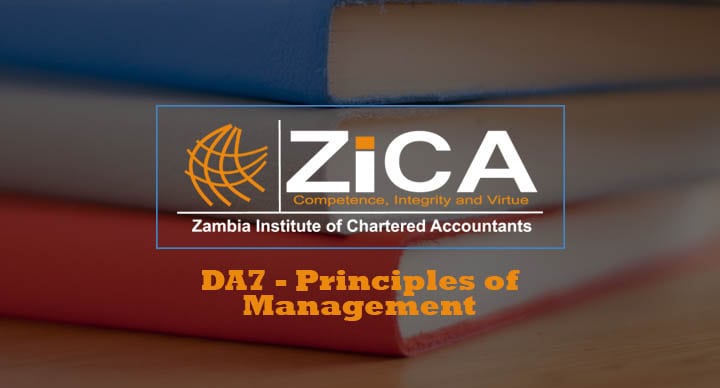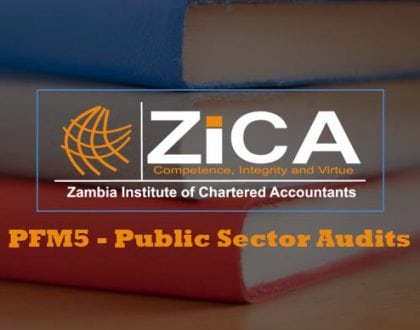DA7-Principles of Management
No access plans exist.

Course Features
Course Details
DA7-Principles of Management
Learning outcomes
On successful completion of D7, students should be able to:- Identify the different types of organisation and key stakeholders
- Explain how the strategic position of the organisation is evaluated
- Explain how the organisation can be designed and structured for success
- Discuss the role of managers and the theories of management
- Discuss leadership theories, styles and issues
- Explain the different theories of motivation
- Explain the role of change management in implementing corporate strategy
- Explain the importance of the recruitment process, training, development and evaluation of employees
- Describe the specific challenges faced in managing a public sector organisation
| Topic | Weighting |
| Different types of organisation and stakeholders | 10% |
| Strategic position of an organisation | 10% |
| Design and structuring of an organisation | 10% |
| Role of the managers and theories of management | 10% |
| Leadership theories, styles and issues | 10% |
| Theories of motivation | 10% |
| Change management | 15% |
| Strategic human resources management | 15% |
| Public sector organisations | 10% |
Content
- Role of the managers and theories of management
- Role of the manager and principles of management
- Define management
- Explain the role of the manager in an organisation
- Management skills
- Explain the management skills required by managers
- Theories of management
- Describe the various theories of management
- Scientific Management by Fredrick W Taylor
- Henri Fayol’s Principles of Management
- Max Weber’s Bureaucracy
- Elton Mayo’s Human Relations Movement
- Chester .I Benard’ s systems approach
- Describe the various theories of management
- Role of the manager and principles of management
-
Different types of organisation and stakeholders
- Different types of organisation and their characteristics
- Describe the different types of organisations and their characteristics.
- Benefits and limitations of different types of organisation
- Explain the benefits and limitations of each type of organisation
- Different types of stakeholders
- Define a stakeholder
- Explain the various stakeholders of an organisation.
- Small and medium-sized enterprises
- Different types of organisation and their characteristics
- Design and structuring of an organisation
- Role and purpose of core functions
- Describe the purpose of core functions of an organisation
- Different structures of organisations
- Identify and explain the basis of developing an organizational structure.
- Explain the types of organisation structures
- Organisation of internal relationships
- Explain how internal relationships can be organised to deliver strategy
- Design of structure, processes and relationships
- Assess the design of structure, processes and relationships
- Culture and behaviour
- Explain organisational culture and behaviour
- Role and purpose of core functions
-
Strategic position of an organisation
- Fundamental nature of strategy
- Discuss the fundamental nature of strategy
- Relationship between different levels of strategy
- Describe the relationship between different levels of strategy in the organisation
- Implementation of strategy
- Describe how strategy can be implemented in an organisation
- Assessment of the micro-environment
- Assess the micro-environment using SWOT analysis
- Explain the purpose of SWOT analysis
- Assessment of the macro-environment, using PESTEL
- Assess the macro-environment using PESTEL analysis
- Explain the purpose of PESTEL analysis
- Fundamental nature of strategy
-
Leadership theories, styles and issues
- Difference between management and leadership
- Explain the differences between management and leadership
- Theories of leadership
- Discuss the various theories of leadership: Trait, Behavioural, Style and Contingency theories.
- Nature and uses of different styles of leadership
- Explain the nature and uses of different styles of leadership
- Leadership in modern organisations
- Describe emotional, team and moral leadership.
- Uses, benefits and possible obstacles to delegation
- Discuss the uses, benefits and possible obstacles to delegation.
- Difference between management and leadership
- Theories of motivation
- Nature and process of motivation
- Describe the nature and process of motivation
- Theories of motivation
- Discuss various theories for motivation: Maslow’s hierarchy of needs, Herzberg’s two Factor, Vroom’s expectancy theory, McGregor’s theory X and Y, McClelland’s theory of needs, Likert’s organizational management styles, Adam’s Equity theory, Locke and Latham’s Goal setting theory.
- Personal achievement and career development
- Explain the need for personal achievement and career development
- Role of job design in motivation
- Explain the role of job design in motivating employees
- Nature and process of motivation
-
Change management
- Concept of strategic change
- Discuss the concept of strategic change
- Different types of change
- Compare and contrast different types of change
- Impact of change triggers on organisation
- Explain the impact a range of change triggers could have on an organisation and its strategy
- Techniques for managing the change process
- identify and explain techniques for managing the change process
- Role of leadership in managing change
- Explain the role of leadership in managing the change process
- Techniques for overcoming resistance to change
- identify and explain the techniques for overcoming resistance to change
- Relationship between change process and organisational culture
- Explain the relationship between the change process and organisation change
- Ethical issues raised by change management and strategy implementation
- Discuss ethical issues raised by change management process and the implementation of strategic plans
- Concept of strategic change
-
Strategic human resources management
- Role of human resources management
- Describe the role of the HR management function.
- Process of recruitment and selection
- Explain the process of recruitment and selection.
- Describe the methods that can be used in recruitment and selection.
- Training and development
- Define training and development.
- Describe how the process of training and development improves performance/ productivity in organizations.
- Purpose and process of performance evaluation
- Explain the purpose and process of performance evaluation
- Role of human resources management
-
Public sector organisations
- Definition of public sector organisations
- Explain what is meant by a public sector organisation
- Objectives of public sector organisations
- Describe the objectives of a public sector organisation
- Features, structure and issues arising in a community, non-profit organisation
- Identify the features, structure and issues likely to arise in a community non-profit organisation
- Definition of public sector organisations
Format of the exam
| Section | Marks |
| Section A: 10 compulsory multiple choice questions, 2 marks each | 20 |
| Section B: Any 4 out of 5 questions, 20 marks each | 80 |
| TOTAL | 100 |
Recommended reading
- ZiCA D7 Study Manual Bratton, J and Gold, J, Human Resource Management: Theory and Practice, 4th edition, Palgrave Macmillan, 2007
- Handy, C, Understanding Organisations, 4th edition, Penguin, 1993
- Mullins, L J, Management and Organisational Behaviour, 9th edition, FT Prentice Hall, 2010
This course does not have any sections.





